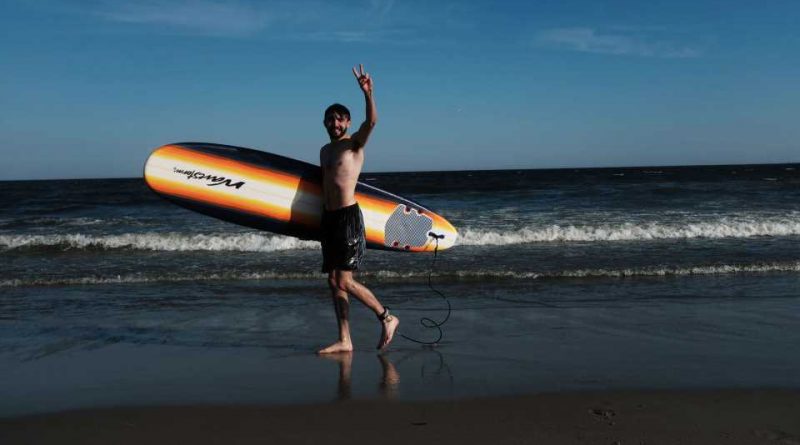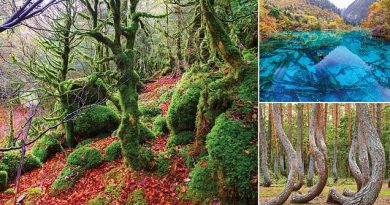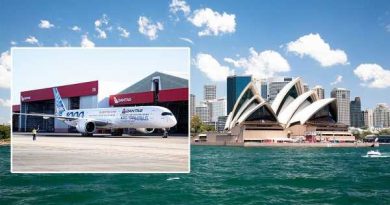Hot beach summer is coming
If 2020 was the summer of road trips, 2021 is the summer of resorts.
While many of last year’s trends persist — vacation home bookings and car rentals are among the few segments of the travel industry that have surpassed their pre-pandemic levels — new trends are emerging. And those trends are decidedly luxurious in nature, if less far afield than in the Before Times. This summer, you’ll find Americans relaxing (and working) from sandy North American beaches.
Load Error
Overall, summer 2021 signifies a return to more traditional leisure trips.
“Last summer was like the carefully designed pod, right? Yes, you can see family or friends, but you need to do some planning and ask a lot of questions and be choreographed,” Airbnb co-founder and chief strategy officer Nate Blecharczyk told Recode. “Suddenly, people aren’t talking about pods anymore, right? They’re talking about getting vaccinated and then hanging out.”
As vaccination rates rise and the travel industry claws its way back, many people are getting on flights for the first time in more than a year. But rather than traveling to cities or heading abroad, they’re opting for domestic or Mexican beach locales.
A list of this summer’s top destinations for US travelers is basically a rundown of North American beach towns: Miami, Myrtle Beach, Key West, Cancun, San Juan, Honolulu, and Tulum are all on top, according to May data from Tripadvisor. For comparison, 2019’s list was dominated by big international cities such as New York, San Francisco, Chicago, Sydney, and Tokyo. Of course, part of this has to do with ongoing travel restrictions to different countries, making domestic travel an obvious route — but even stateside, many of the top destinations fit the same profile.
And at these beach locations, travelers are opting for package deals such as all-inclusive resorts, where there are fewer unknowns. These bundles often include lodging, food, activities, and even travel to a single destination. They accommodate guests looking to travel in a more contained and conservative way than normal — one that’s more attractive in the wake of a pandemic.
As a result, these types of luxury resorts could recover more quickly than the travel industry at large.
“They have that sort of enclave tourism, where you can go there, you can completely separate from the world, basically, and get off the flight, get in a private taxi, get to the hotel, and you have everything there,” explained Wouter Geerts, senior research analyst at travel industry intelligence platform Skift Research.
Decius Valmorbida, president of the travel unit at travel technology company Amadeus, refers to this as “bubble travel,” where people want a “full, more controlled experience” compared with previous trends where consumers opted for “more adventures, more customized and personalized experiences.” For a family traveling to Key West, that could mean getting picked up by the resort at the airport and spending your entire trip on resort property.
It also means an increase in technology dedicated to avoiding other people, such as self check-in, contactless payments, and keyless entry. Some all-inclusive resorts also require Covid-19 tests, both before travel and on-site, to help maintain the atmosphere of safety.
The bubble travel idea extends beyond the US as well, to nearby nations with similar vaccination rates or where there’s frequent travel to and from, as well as more isolated locales. The Maldives, an island nation in South Asia, for example, saw a 66 percent increase in searches for two-week vacations compared with 2019, according to data from Amadeus. Previously, that trip might have been a journey around Europe instead.
“You would have a concert in here, trade fair in there, or something else that you would go to, so you would see a lot more movement compared to now, when someone is literally looking for an isolated island in the middle of the Indian Ocean,” Valmorbida said.
In addition to seeking safety and isolation, the trend toward luxury beach resorts is encouraged by having a little more cash. Many Americans were able to save money during the pandemic in 2020, thanks in part to not spending it on stuff like vacations. As a result, they’re splurging a bit in 2021.
Sixty-one percent of people in an American Express survey said they plan to spend more than they normally would on vacation this year, since they could not travel in 2020.
The travel industry has a long way to recover
Globally, the travel market has not yet rebounded. And a full return could take years, though the US market is closer than others thanks to relatively high vaccination rates.
2021 air travel is expected to recover to just 43 percent of 2019 levels, according to the International Air Transport Association. However, the market for domestic air travel in the US could return later this summer, per travel analytics company ForwardKeys, whose data shows confirmed bookings returning to 2019 levels in the first week of August. Where those flights are going, however, looks a lot different, as airlines drop business destinations in exchange for more popular leisure locales.
Cruises, perhaps the travel segment most devastated by the coronavirus pandemic — they were even referred to as “floating Petri dishes” due to the number of outbreaks on cruise ships early in the pandemic — are coming back, though unevenly. Cruises to the Caribbean, a popular destination for US travelers, are expected to recover more quickly than other locations, thanks in part to proximity to both the more-vibrant US market and their (very dependable) customers.
“One thing that the cruise industry really has going for themselves is a very loyal base of customers,” Skift Research’s Geerts said, noting that at the outset of the pandemic, cruise passengers were much more likely than airline customers to postpone their trips rather than cancel them.
“People that like cruising really like cruising,” he said.
Another summer of road trips, Airbnbs, and remote work
There are, however, pockets of the travel industry that have recovered and are even doing better than ever, including car and vacation home rentals through sites like Vrbo or Airbnb. Their success, in turn, can be pegged to other trends that were popular during the pandemic and are now accelerating into this summer.
Car rentals have returned to pre-pandemic levels in North America, though they’re still far below that internationally, according to data from Skift Research. They’ve been buoyed by the continued popularity of the great American road trip. This Memorial Day weekend, location intelligence provider Arrivalist is predicting there will be 38.5 million road trips in the US, 46 percent more than last year and a level that’s 2.4 percent higher than in 2019. While many are taking to the air again, many others are still relying on cars for trips they might have previously done by plane. The fastest-growing road trip segment is for trips longer than 250 miles.
Vacation rentals have rebounded as well, though it varies by location.
In the first quarter of this year, Airbnb posted higher revenue than it did in the first quarter of 2019, and CEO Brian Chesky earlier this week predicted “the biggest travel rebound in a century.”
“A lot of people have either discovered it or are using it a lot more,” Skift’s Geerts said of vacation rentals.
The growth in vacation rentals is riding in part on Americans’ desire for the relative safety and isolation of the great outdoors, after many months spent inside. Indeed, the success of specific vacation rental locations can be linked largely to their proximity to the outdoors.
“To put it really simply, if you’ve got an isolated place with access to water, or a mountain, or a park, you had a killer 2020,” Cree Lawson, Arrivalist’s founder and CEO, told Recode. “If your city requires you to pass through a very small, crowded place like a subway to enter or leave, it was probably not so good.”
In 2019, all of Airbnb’s top 10 locations were cities, and they accounted for 10 percent of all bookings, according to Blecharczyk. That’s now down to 5 percent. Meanwhile, rural travel has grown to about a fifth of all Airbnb nights booked.
This summer’s top US Airbnb destinations are all rural or beach locations, including Whitefish, Montana (near Glacier National Park); Hilton Head Island, South Carolina; Panama City Beach, Florida; and Michigan’s Upper Peninsula (on the Great Lakes and home to Hiawatha National Forest).
The ability to work from home — or anywhere — has also greatly accelerated the desire to rent whole homes, where people can live and work for extended periods of time.
“People can travel anytime, they are traveling to more places, and they are staying longer. The lines between travel, living, and working are blurring,” Airbnb’s Chesky said in a recent announcement about a suite of upgrades meant to capitalize on these trends. Updates include more options to search flexible dates and even locations, as travel isn’t necessarily restricted to holidays or weekends. Since rolling out its flexible dates tool in February, more than 100 million searches have used it.
People can also stay for longer spans of time. Stays of longer than 28 days account for about a quarter of nights booked on Airbnb, up from 14 percent in 2019. More than half those stays are for people who say they’re working or studying.
This summer, it’s more likely they’ll work from the beach.
Source: Read Full Article




